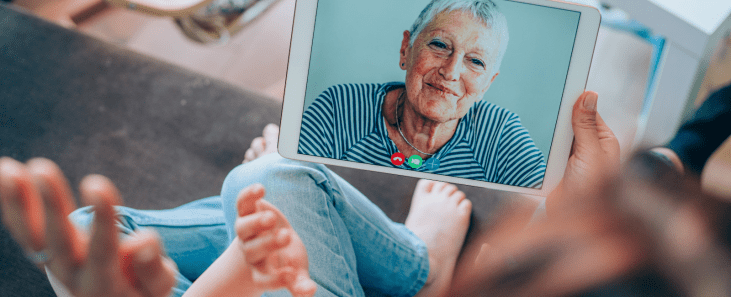Tips for Long-Distance Caregiving

Caring for a loved one who lives far away can be difficult. But there are many ways to help from afar — and maximize the time you do spend together.
What is long-distance caregiving?
A caregiver is anyone who provides help to someone in need of care. Friends and family members often serve as caregivers for loved ones who are injured, sick, or have a disability — helping to shop, provide transportation, manage medication, and more.
Not all forms of care are face to face. If you provide help from an hour or more away, you’re a long-distance caregiver — and, like a nearby caregiver, you probably want to provide the best care you’re capable of.
Finding Ways to Help
You may coordinate care with your loved one directly, with a primary caregiver, or with multiple caregivers. By taking on responsibilities that can be handled from a distance, you help lighten the load of those who are able to help with in-person care. This includes:
- Researching your loved one’s condition and available resources
- Arranging professional in-home or facility-based care, such as assisted living
- Arranging for medical equipment, such as oxygen equipment or wheelchairs
- Managing finances, paying bills, and arranging personal, health, and financial records in one place
- Providing emotional support or respite care for your loved one’s other caregivers
- Keeping friends and family members updated and informed
Plan out Your Visits
If you’re unable to visit often, ask ahead of time what your loved one or their caregivers need, and then set clear, achievable goals for your visit. For example: Repair the leaking faucet in the bathroom, shop for groceries, drive your loved one to an appointment.
Your visit should also include quality time outside of caregiving activities. What can you and your loved one do together to create good memories? Maybe visiting friends or family members, attending a community event, or playing cards at home.
Check in Regularly
It’s important to check in, not only with your loved one, but also with their caregivers and (if you have permission to do so) health care providers. Some families choose to schedule conference calls so that everyone can be in one conversation and receive the same updates.
If your loved one doesn’t have a cell phone of their own and you want to get them one, spend some time programming it with important contacts (doctors and emergency contacts, but also friends and family members) and teaching them how to use it.